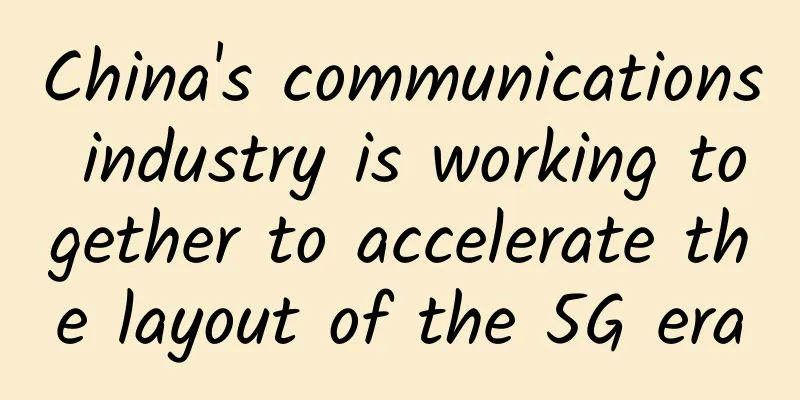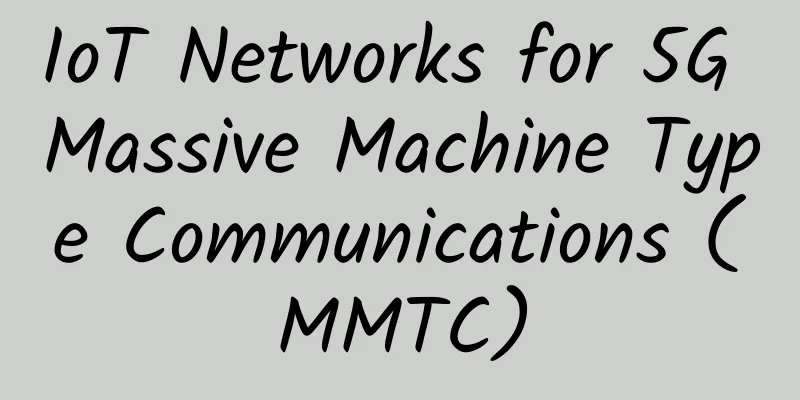Advantages of 5G networks and the main problems they face

|
5G networks are the next generation of wireless technology. They offer faster speeds, lower latency, and higher data capacity than previous generations. 5G networks are critical to powering the next wave of technological innovation, including self-driving cars, IoT devices, and VR/AR applications. 5G networks allow users to do things like download movies or stream live video in seconds without any delay or buffering, allow surgeons to perform surgery remotely, and reverse climate change through smart energy and pollution management systems. 5G networks are also expected to have a significant impact on economic growth. According to a study by Nokia, 5G networks could add $8 trillion in value to the global economy by 2030. However, 5G networks are not without their problems. Here are some of the main issues and challenges affecting the development of 5G networks, and how companies can respond to this rapidly developing market. What is 5G network?5G is the next generation of wireless connectivity that promises to revolutionize how users experience the connected world. 5G networks are faster and more reliable than previous generations, with download speeds ranging from 1Gbps to 10Gbps. This enhanced speed and reliability will enable a new wave of innovative technologies, from virtual reality experiences to robotics to artificial intelligence. 5G will also be more efficient than previous generations, with latency (the time it takes for a device to send and receive data) significantly reduced to just one millisecond. This will enable new applications that were simply not possible before, such as real-time augmented reality and remote surgery. In short, 5G is more than just a new generation of wireless connectivity, it is a transformative technology that will change the way people live, work and play. From a technical perspective, 5G networks are based on a new, more efficient coding scheme called orthogonal frequency division multiplexing (OFDM). Orthogonal frequency division multiplexing (OFDM) is a form of digital modulation in which data is transmitted using a large number of closely spaced carrier frequencies. This approach has several advantages over existing coding schemes, including improved spectral efficiency, reduced multipath distortion, and improved immunity to interference. 5G networks also use advanced antenna arrays and beamforming technology to focus wireless signals directly on users' devices, rather than broadcasting them indiscriminately in all directions. This will further improve spectrum efficiency and reduce interference levels. By leveraging these next-generation technologies, 5G networks will be able to deliver unprecedented levels of performance and reliability. Development Trends of 5G Networks(1) Rapid adoptionAccording to the GSMA, 5G devices accounted for 8% of global mobile connections in 2021 and are expected to grow to at least 2 billion by 2025. This rapid adoption is driven by people’s desire to take advantage of 5G, the increased availability of 5G devices, the falling prices of 5G services, and the launch of 5G networks in more countries and regions around the world. (2) Bandwidth CompetitionAs 5G technology continues to develop and deploy, the resulting competition for bandwidth is the result of large telecom companies vying for market position. This happened when the Federal Communications Commission (FCC) auctioned radio frequency (RF) spectrum to 5G enterprise telecom companies. The auction triggered an RF gold rush with a total amount of $81 billion. This competitive landscape is likely to continue as providers look for ways to differentiate their services and attract enterprise customers. (3) Edge computing improvementsEdge computing technology enables businesses to compute data closer to the source, rather than sending it back to the cloud for processing. By doing so, businesses can enjoy faster speeds and better latency. Additionally, edge computing helps improve security and privacy because data never has to leave the control of the enterprise. As a result, more and more companies are looking to adopt edge computing to take advantage of its many benefits. 5G will play an important role in achieving this goal as it has the bandwidth and low latency required to support edge computing. Therefore, we can expect the adoption of edge computing in the enterprise 5G market to increase significantly in the coming years. (4) Growth in the router and switch marketsDue to the huge performance potential accessible, enterprises will want to ensure that their routers and switches can keep up with the development of 5G networks. Many enterprises are adopting new 400Gbps routing technology. This trend is expected to contribute significantly to the overall market growth. (5) Business support5G networks are becoming increasingly popular among businesses because they are much faster than 4G, meaning businesses can take advantage of the higher speeds for data-intensive tasks like video streaming and large file transfers. In addition, 5G has much lower latency than 4G, which means there is less delay between when a user initiates an action and when it is executed. This is especially important for applications that require real-time responses, such as video conferencing and online gaming. Five major issues facing 5G networksIt may take some time before the full benefits of 5G are realized, as there are several issues currently affecting 5G networks and acting as barriers to adoption. (1) Ecosystem availabilityGlobally, there is limited availability of critical infrastructure outside of urban centers. This lack of infrastructure makes it more difficult to deploy 5G networks in rural areas. In addition, the high cost of 5G equipment is another barrier to deployment. Although some telecom companies are investing in 5G infrastructure, the investment required is huge, so it will take some time for 5G networks to become popular. Meanwhile, industry vendors have proposed several solutions to address the problem. One solution is to use higher frequency spectrum, which is more widely used in rural areas. Another solution is to use cellular equipment that is smaller and easier to deploy than traditional cellular towers. (2) Education and understanding5G is not just an evolution of existing 4G technology, but a completely new network that requires different deployment, management and security approaches. Unfortunately, not all key business decision makers fully understand 5G and the business-enabling benefits it brings. Therefore, businesses need to invest in educational resources to realize the full potential of 5G and help them understand the technology and its impact. Only then can they make the informed decisions needed to ensure a successful 5G rollout. (3) Lack of awareness5G is still in its infancy, and there is considerable confusion among some corporate board members about what 5G is and how to use it. According to a Nokia survey, more than one in five technology buyers believe that implementing 5G is not a priority for their current business. This lack of awareness could delay the rollout of 5G networks and prevent companies from realizing the full potential of this groundbreaking technology. To overcome this challenge, efforts need to be made to educate business executives about the benefits of 5G and the ways it can be used to improve efficiency and drive growth. (4) Cost and complexityAs operators strive to meet data demand and support new applications, the deployment of 5G networks is becoming increasingly complex and expensive. One of the key issues facing 5G networks is the need for a high density of base stations, which requires a large investment in infrastructure. In addition, 5G networks face the challenge of supporting a variety of new applications, such as augmented reality and virtual reality. These applications place new demands on the network, causing congestion and latency. As a result, operators are under pressure to increase network capacity and ensure that they can provide a high-quality user experience. (5) SafetyAs 5G networks become more popular, security issues are becoming more prominent. Due to the increase in the number of IoT devices connected to the network, 5G networks have a larger attack surface than previous generations of cellular networks. In addition, 5G networks are more complex, making it more challenging to identify and fix security vulnerabilities. Supply chain and software vulnerabilities are also a problem because it is often difficult to know where components come from and whether they have been tampered with. Despite these challenges, there are steps that businesses can take to mitigate the risks associated with 5G networks. By working with trusted vendors and partners, conducting regular security audits, and implementing strict security policies, businesses can help ensure their 5G networks are secure and reliable. Problems facing the future development of 5G networks5G promises faster speeds, lower latency, and greater capacity than its predecessors. This new generation of network technology will unleash a wave of technological innovation, including the development of the Internet of Things, driverless cars, and virtual reality. While 5G adoption is still in its early stages, several trends are emerging that will shape the future of the technology. (1) Accessibility5G adoption will become more accessible. Currently, 5G is only available in select areas and is often very expensive. However, as infrastructure is built out and more service providers enter the market, prices are expected to drop, making 5G more accessible to consumers and businesses. (2) Industry 4.0With 5G, new capabilities will ultimately catalyze the next industrial revolution. 5G is often referred to as the foundation for Industry 4.0 – the fourth industrial revolution driven by digital technology. With its high speed and low latency, 5G will support new applications and use cases that were not possible with previous generations of cellular networks. This will open up new business opportunities across industries and pave the way for the next wave of economic growth. (3) Virtual reality and augmented reality5G will continue to power mixed reality services. Augmented reality and virtual reality are already being used in many industries, such as gaming, education, and retail. With 5G, these services will become even more realistic and immersive as latency decreases and image quality improves. This development will have a significant impact on the way people interact with technology and could lead to widespread adoption of mixed reality services in people's lives and work. (4) Open RANOne trend that could shape the future of 5G is Open RAN (radio access network), which refers to the move away from proprietary network equipment and toward open standards-based equipment that can be sourced from multiple suppliers. This will increase market competition and provide support for more diverse radio technologies. Open RAN has been adopted by many operators around the world and is seen as a key driver for 5G deployment in many countries. The development of 5G in the next few years5G represents a major shift in the way people connect to the world around them. The technology is still in its early stages, but it has the potential to revolutionize the way people live, work, and play. The trends mentioned above will shape the future development of 5G networks and help determine how this transformative technology will be used in the coming years. |
Recommend
Five ways 5G will change manufacturing
5G could help realize the ideal of modular factor...
Gartner predicts that global spending on 5G network infrastructure will double by 2020
[[336113]] Recently, according to Gartner's l...
Enterprise cloud transformation is imminent, network architecture needs to be prepared
[51CTO.com original article] The rapid developmen...
Ministry of Industry and Information Technology: Three major areas to promote services suitable for the elderly
[[394583]] News on April 20: At the end of last y...
Don't call Riverbed just a WAN optimization company anymore. It's become something more.
[51CTO.com original article] Recently, Riverbed l...
TmhHost: US AS9929 line from 30 yuan/month, US CN2 GIA/Hong Kong CTG monthly payment from 40 yuan
TmhHost is a Chinese hosting company founded in 2...
China Mobile's Huang Yuhong: China Mobile will be a pioneer in 5G empowerment of various industries
On August 8, Huang Yuhong, deputy director of Chi...
HostHatch: Hong Kong/Tokyo/Singapore AMD EPYC series starting from $25/year, 2GB/25G NVMe/1TB monthly traffic
HostHatch has released a new promotion plan on LE...
What opportunities and challenges will the Internet of Things face when it meets blockchain?
Internet of Things and Blockchain Blockchain is a...
[Black Friday] RackNerd: Multi-datacenter VPS annual payment starts from $10.88
RackNerd's Black Friday promotion has been la...
North American 5G connections grow 67% in one year
[[428617]] North American 5G connections grew 67%...
A brief discussion on the development history and future trends of routers
Labs Guide As a common network device, routers ca...
[11.11] LOCVPS top up 100 yuan and get 10 yuan, all hosts are 60% off, Hong Kong VPS monthly payment starts from 22 yuan
LOCVPS officially announced the promotion during ...
Global IoT connection technology market forecast by type in 2025
As the number of global IoT deployments continues...
Connectivity trends: All roads lead to Wi-Fi in 2023 and beyond, says Wi-Fi Alliance
Despite turbulent times, Wi-Fi has had a stellar ...









